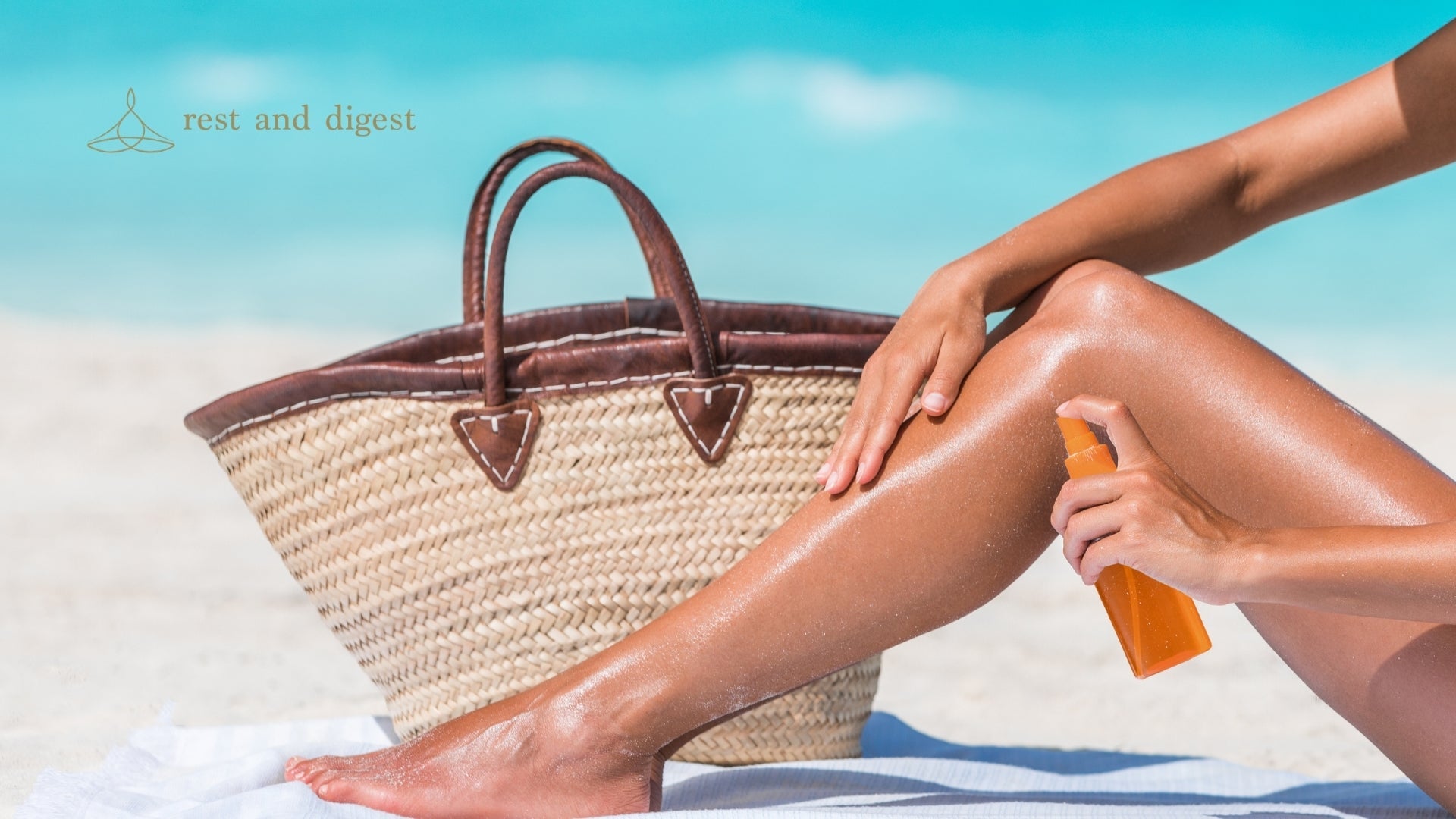
What Toxic Ingredients Should You Look Out For In Sunscreen?
When selecting sunscreen, it's important to consider not only protection from the sun but also potential risks from harmful ingredients. Some sunscreen formulations may contain ingredients that could be harmful to both human health and the environment. Being aware of these toxic ingredients can help you make more informed choices when choosing sunscreen products.
Common Toxic Ingredients In Sunscreen
Oxybenzone (Benzophenone-3)
Oxybenzone is probably the most toxic ingredient in sunscreen. It absorbs UV light to protect the skin from sun damage. However, studies show oxybenzone can disrupt hormone levels and cause reproductive issues and developmental abnormalities. And when washed off into the ocean, oxybenzone is bad for coral reefs.
Octinoxate (Octyl Methoxycinnamate)
Like oxybenzone, octinoxate absorbs UVB rays. It also disrupts human hormone function and can affect reproductive health. Like oxybenzone, octinoxate is a threat to coral reefs and other marine life so some places have banned it in sunscreens.
Retinyl Palmitate (Vitamin A Palmitate)
Retinyl palmitate is a form of vitamin A added to sunscreen for anti-ageing. However, when exposed to sunlight, retinyl palmitate may increase the risk of skin cancer by speeding up tumour and lesion development. Dermatologists and sunscreen experts are divided on this ingredient with some wanting it out of sunscreens.
Parabens (Butylparaben, Ethylparaben, Methylparaben)
Parabens are preservatives in many cosmetic products including sunscreen to prevent bacterial and mold growth. They are linked to hormone disruption, especially estrogenic activity which may cause breast cancer and reproductive issues. While the concentration of parabens in sunscreen is low, the cumulative effect from multiple products is a concern for some health experts.
Phthalates
Phthalates are a group of chemicals used to make plastics more flexible and durable. They are sometimes found in sunscreen as part of fragrance formulations or as plasticisers. Phthalates are endocrine disruptors and are linked to developmental and reproductive toxicity. Avoid sunscreens that list "fragrance" or "parfum" on their ingredient labels to reduce phthalate exposure.
Fragrance
Fragrances are added to sunscreen and other cosmetic products to make the user experience better. But the term "fragrance" can mean a mix of potentially harmful chemicals including phthalates and other allergens. Fragrance formulations are trade secrets and are not required to be disclosed on product labels so consumers can't know what they're being exposed to.
Choosing Safer Sunscreens
When selecting a sunscreen, it's important to consider the following tips to avoid potentially harmful ingredients:
- Choose Mineral Sunscreens: Look for products that contain zinc oxide or titanium dioxide as active ingredients. These provide effective broad-spectrum protection without the risks associated with chemical filters.
- Check For Broad-Spectrum Protection: Make sure the sunscreen protects against both UVA and UVB rays with an SPF of 30 or higher for adequate sun protection. For instance The Base Collective Hydrating Natural Mineral Sunscreen from Rest And Digest.
- Read Labels: Avoid products containing oxybenzone, octinoxate, homosalate, and other chemical filters known to pose health or environmental risks.
- Opt For Fragrance-Free: Choose unscented or fragrance-free sunscreens to reduce the risk of skin irritation or allergic reactions.
Introducing The Base Collective Hydrating Mineral Sunscreen 100ml from Rest And Digest

The Base Collective Hydrating Mineral Sunscreen is your daily shield against UVA, UVB and UVC rays. With SPF50, it not only protects but also hydrates the skin, leaving it looking healthy and glowy. With hyaluronic acid for intense moisturisation and magnesium for antioxidant protection, it helps prevent premature ageing.
This tinted mineral sunscreen is suitable for use in Australia and suits for most skin types, not white cast like physical sunscreens. It blends in with your skincare and can be worn alone or under makeup without pilling.
Made with jojoba and sunflower seed oils, this hydrating natural sunscreen provides deep hydration and antioxidant protection. Besides, being an all-natural, chemical-free, reef-safe formula, Australian owned and made, it is also gluten-free, dairy-free, cruelty-free, and vegan-friendly.
Apply to all exposed areas, including ears, at least 20 minutes before sun exposure. Reapply after swimming, heavy sweating or towelling off and every 2 hours or more frequently throughout the day.
By learning about the different ingredients in sunscreen and making well-informed decisions, you can effectively shield your skin from the sun's harmful rays and also do your part in preserving the environment. By focusing on both safety and effectiveness, you can confidently enjoy the outdoors while minimising your contact with potentially harmful substances.






